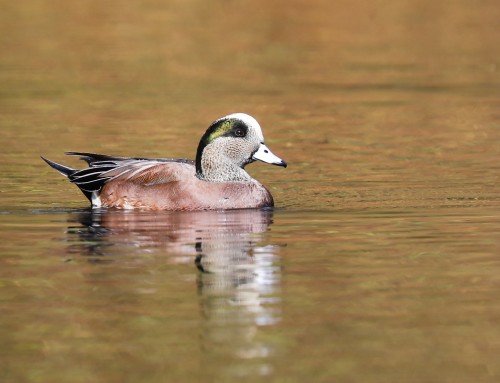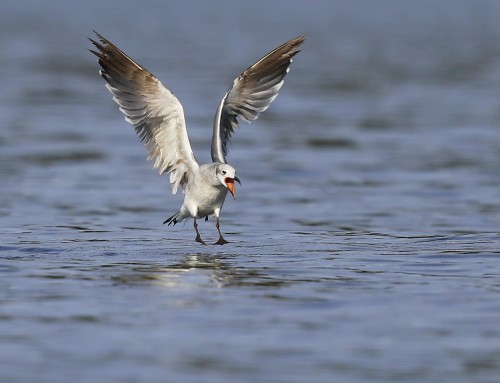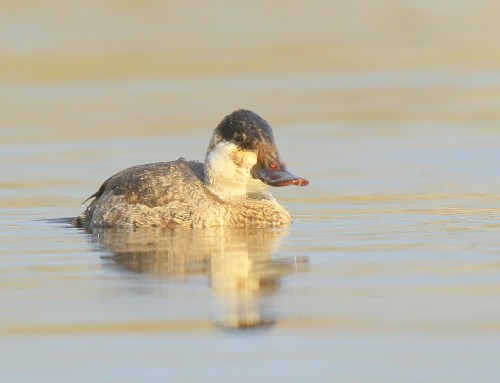Nov. 22, 2024: The Ring-necked Duck is a medium-sized diving duck with a dark head, distinct bill bands, contrasting plumage, and yellow eyes in males. Found in shallow ponds and wetlands, it forages near the shore of waterways during migration. This male was recently seen at Shiverick’s Pond in downtown Falmouth.
The Ring-necked Duck (Aythya collaris) is a medium-sized diving duck with distinct field marks that help in its identification during fall migration. Despite its name, the “ring” on its neck is not a prominent feature in the field. Here are its key characteristics:
Male:
- Head and Neck: A glossy black head with a slight peak at the rear, giving it a distinctive triangular profile.
- Bill: Bluish-gray with a white band near the tip and another band at the base, a prominent field mark.
- Body: Black breast contrasts with a gray body and flanks. The sides often show a vertical white wedge where the flanks meet the breast.
- Back: Dark gray to blackish.
- Eyes: Bright yellow.
Female:
- Head and Neck: Brownish overall, with a lighter face and a pale ring around the base of the bill. A whitish eyering and an often subtle pale line extending back from the eye are helpful for identification.
- Bill: Similar to the male, with grayish coloring and faint white bands near the tip.
- Body: A brown back with lighter grayish-brown flanks and a paler belly.
Both Sexes:
- Shape: Compact body, peaked head, and a shorter tail, distinguishing it from other diving ducks like scaups or redheads.
- Flight Marks: In flight, both sexes display dark upper wings and a lighter belly. Their pointed wingtips and fast, direct flight can help separate them from dabbling ducks.
Behavior and Habitat Notes:
- Found in shallow freshwater wetlands, ponds, and lakes during migration.
- Unlike most diving ducks, they are known for their ability to forage in shallower waters, giving birders better views of their distinctive features.
These field marks make the Ring-necked Duck easier to identify, even in mixed flocks during the busy fall migration season.







Leave A Comment
You must be logged in to post a comment.